In the process of creating our Top 20 lists our team writes scouting reports for more than just the 20 players who make the cut. For the first time in many years we are releasing theses scouting reports tiered by OFP below.
Here is the Nationals Top 20 prospects for reference:
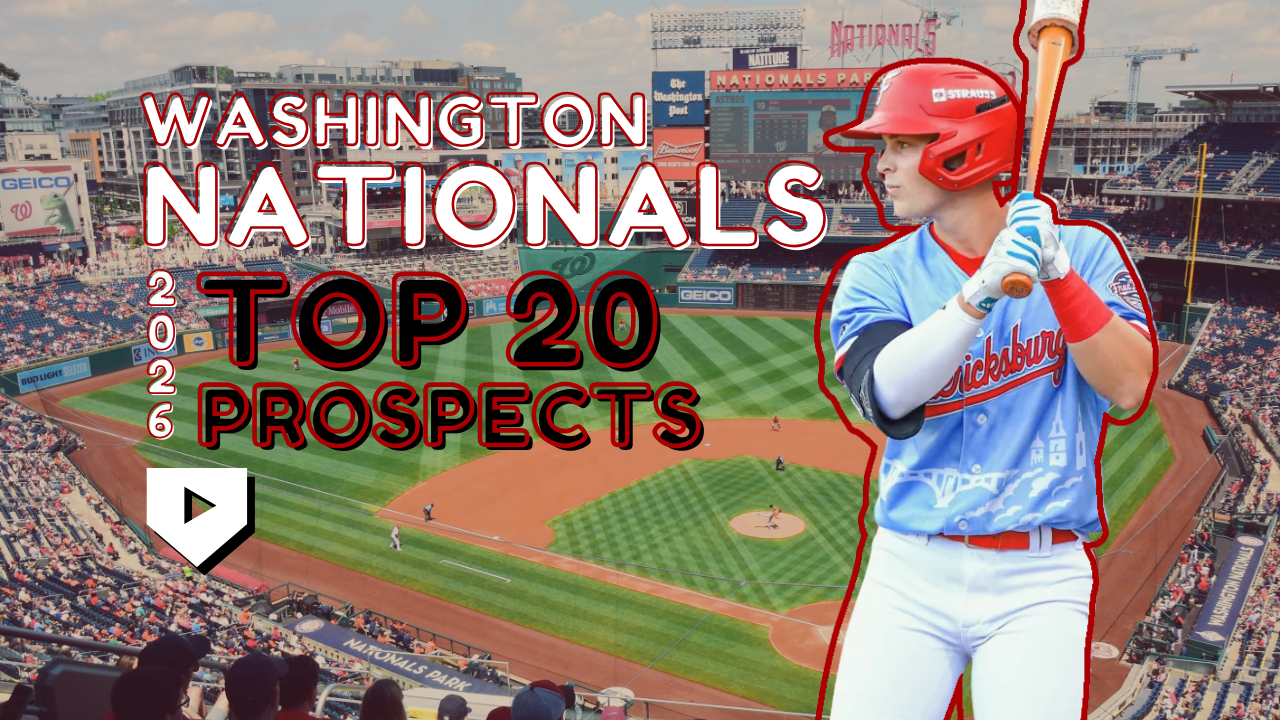
About Our Top 20 Lists
Prospects Live, led by its evaluating team & Director of Scouting Rhys White, is proud to begin rolling out its annual offseason system reports. The team combines industry feedback, our live looks, film, and available data to compile each org. We believe this effort has enabled us to present you, the reader, with our best possible view of the prospects in the organization.
We have constructed this list using the Overall Future Potential (OFP) scale. There is no perfect equation for ranking prospects or assigning value to them, but we believe this method is the best possible approach. Every prospect on this list has been graded based on the tried and true 20-80 scouting scale. An 80 is the highest tool and OFP grade on the scale, reserved for MVP-caliber players or tools. Conversely, a 20 is reserved for non-prospects (NPs). A 50 OFP falls in the middle, indicating our evaluators deem this player a future average major league player. Below the 50 OFP tier are the 45s and 40s, comprising a large majority of players on each list. These are specific-role players, such as platoon hitters, utility players, or low-leverage relievers. Above the 50 OFP tier are the 55s and 60s. A 55 represents a future above-average player, and a 60 OFP designation is reserved for future All-Star caliber players.
In addition to the tool grades and OFP, we will also include a 'Risk' associated with each prospect. We use this to better communicate to you, the reader, whether a grade is more aggressive or conservative in nature. The evaluation team has worked hard to apply both the grades and risk components to better illustrate how each individual prospect stacks up in their respective system and in the baseball ecosystem.
Evaluators: Matt Seese, Mitch Stachnik, Nate Jones, Rhys White, Trevor Hooth
Honorable Mentions Scouting Reports
Find Scouting Reports and Tool Grades in each toggle section
45 OFP
Yoel Tejeda Jr. , P - 45 OFP
Scouting Report
HT: 6-8 WT: 230 H/T: S/R
Highest Level: A+
ETA: 2027
OFP: 45
Risk: High
Fastball: 55 - (91-96 mph)
Slider: 55 - (80-82 mph)
Splitter: 45 - (82-86 mph)
Command: 50
Scouting Report
Coming out of high school, Tejeda was ranked as one of the top two way talents in the country, excelling as both a pitcher and a power hitting outfielder. He was drafted in the 19th round by the Pirates but forwent pro ball to attend Florida and play for the Gators. His freshman year was unspectacular. He started six games and made two relief appearances, posting a 5.56 ERA. After the season, he entered the transfer portal and committed to rival Florida State. In Tallahassee, he worked out of the bullpen, where he recorded a similar 5.95 ERA before transitioning into a starting role in the Cape Cod League prior to the draft. A limited sample size in college, just 42.1 innings, and underwhelming results caused him to fall in the draft. But as a draft eligible sophomore, the Nationals took a flyer on him in the 14th round of the 2024 draft, signing him to an over slot deal worth $225,000. Tejeda is a physically imposing presence on the mound, standing 6 foot 8. His three quarters arm slot and extension create deception, putting him right on top of hitters and giving batters a tough look. He features a tall and fall delivery with smooth, repeatable mechanics. His quick, compact arm action allows his fastball to jump out of his hand with late life, disrupting hitters even without elite velocity. While his motion is clean and athletic, there is still room to add lower body strength and drive, which could help him unlock more velocity and raise his prospect ceiling. So far in his first season of pro ball, he has shown noticeable improvement from his college days and has stuck as a starting pitcher. He has posted a 4.03 ERA and 1.23 WHIP, highlighting the strides he has made over the year. The jump from Low A to High A, however, has been challenging. In a small sample size, he has allowed a 9.72 ERA over his first two High A starts, compared to a 3.43 ERA in 16 Low A outings. He primarily uses a three pitch mix, with his fastball and slider being his best offerings. His sinker and four seam combo sat around 95 miles per hour when working in relief in college, but as a starter in pro ball, it now sits in the 91 to 94 range, touching 96. His slider is his best pitch. It is a true swing and miss offering with the ability to fall off the plate. He also mixes in a splitter in the mid 80s that fades arm side. While it is not as polished yet, it has already shown out pitch potential and is a key reason scouts believe he can stick in a starting role long term. Overall, Tejeda Jr. is a fun prospect to dream on. If he is ever moved to the bullpen, his velocity could tick back up in shorter stints. But even as a starter, his size, extension, and pitchability make him a unique and intriguing arm with upside. - Mitch Stachnik
40 OFP Hitters
Kevin Bazzell, C - 40 OFP
Scouting Report
HT: 6-1 WT: 205 H/T: R/R
Highest Level: A
ETA: 2028
OFP: 40
Risk: Moderate
Hit: 55
Power: 40
Field: 55
Throw: 60
Run: 40
Scouting Report
Kevin Bazzell came to the Nationals by way of the third round back in 2023 from Texas Tech. He has a simple setup and compact swing at the plate, built to get the bat to the ball. It works, he rarely strikes out thanks to his bat to ball skills on top of excellent knowledge of the strike zone and ability to read spin. Bazzell very rarely chases and draws walks at a good rate. When he does make contact, it's mostly to the opposite field. He can drive the ball that way, though he doesn't have over the fence pop. He's more of a gap power hitter. A lot of his value comes from good defense from the catcher position and his strong arm that allows him to control the running game. His defense will lead the profile with questions on if he'll be able to hit enough for a regular role. He has the ceiling of a glove-first backup catcher at the big league level. - Trevor Hooth
Brayan Cortesia, SS - 40 OFP
Scouting Report
HT: 6-2 WT: 190 H/T: R/R
Highest Level: DSL
ETA: 2030
OFP: 40
Risk: Extreme
Hit: 45
Power: 45
Field: 50
Throw: 50
Run: 55
Scouting Report
The headliner, money-wise, in the Nationals 2025 IFA crop, Brayan Cortesia, is a bet on athleticism and some feel for making contact. Watching him on grainy YouTube feeds, he is a decently built, for the DSL, athlete with some quick twitch. He is a present above-average athlete who looks to show off his speed any time he gets on base. The swing is pretty simple; there is a slight leg-kick, and he follows that with a linear bat-path. He has great plate coverage, but his swing tendencies are aggressive because he knows he can get to pitches, even though he should lay off pitches that are past the shadow zone. He is so young, but in the field, the actions are there, but the internal clock is not. He routinely rushed throws and rushed plays that he had some time for, and that resulted in a few errors. There is a lot of developmental runway here, but he is a shortstop prospect who projects for a below-average hit and power combination, even if he is just a 50 defender at shortstop with above-average speed and twitch. - Rhys White
Ronny Cruz, SS - 40 OFP
Scouting Report
HT: 6-4 WT: 170 H/T: S/R
Highest Level: CPX
ETA: 2029
OFP: 40
Risk: Extreme
Hit: 40
Power: 55
Field: 45
Throw: 55
Run: 45
Scouting Report
Ronny Cruz was originally drafted by the Cubs in the 2024 draft in the third round. He wasn't seen until 2025 as he recovered from a knee injury. He was then traded along with Christian Franklin to acquire Mike Soroka. Ronny Cruz is a long and lean athlete whose carrying tool is power. He generates that power thanks to above-average bat speed and some loft in his bat path. Ronny Cruz struggled this year with being far too aggressive early in counts, which resulted in him falling behind. In general, he has issues recognizing spin out of the hand, which has led to concerns about his hitting tool. He posted a 54% swing rate in the complex league, which shows how aggressive of a hitter he can be, especially when paired with a sub-six-percent walk rate. In the field, Ronny Cruz is a fine defender outside of shortstop; he profiles better at third base where his arm plays well. Ronny Cruz's upside is a second-division regular at third base who could hit 25 homers, but that is contingent on his hitting tool taking a step forward. - Rhys White
Seaver King, SS - 40 OFP
Scouting Report
HT: 6-0 WT: 195 H/T: R/R
Highest Level: AA
ETA: 2028
OFP: 40
Risk: High
Hit: 40
Power: 40
Field: 55
Throw: 50
Run: 60
Scouting Report
The Nationals' first-round selection in 2024 has not had the first taste of pro ball that many would have wanted. Seaver King's struggles were nothing new, as his swing-and-miss tendencies and aggressive approach were on display in 2024 when he was at Wake Forest. He struggled to a 78% contact rate across High-A and Double-A, largely due to an aggressive approach; he swung on 53% of his pitches and started 52.1% of his counts down 0-1. Seaver King has issues with expanding the zone, and his aggressive swing tendencies mixed with some issues with breaking balls resulted in a poor year at the plate. These swing tendencies, plus a flat bat path, also make his average raw power play down a full grade in-game. Seaver King, however, did hold his own at shortstop and looks like, at the very worst, an average defensive shortstop. His actions are good, and he shows ample range thanks to his plus athleticism. His arm is strong at shortstop, as he is able to make a variety of throws from a few different platforms. There is still time for King to regain some of the prospect shine he had around the time of the draft, but unless he works on his volatile approach, there is no chance of him being anything more than a bench piece. - Rhys White
Daniel Hernandez, C - 40 OFP
Scouting Report
HT: 6-0 WT: 170 H/T: L/R
Highest Level: DSL
ETA: 2030
OFP: 40
Risk: High
Hit: 55
Power: 30
Field: 45
Throw: 50
Run: 30
Scouting Report
While the stats might not pop off the page, Daniel Hernandez may very well have the best hit tool of any of the 2025 IFA signings for the Washington Nationals. Daniel is a decent height for a catcher, and there is a lot of room left to fill out, especially if he is going to remain as a catcher. He currently projects out to be a below-average defensive catcher, but he is only 17 and there is a lot of room for projection with the glove. He is an okay blocker and an okay presenter. The calling card is above-average to plus bat-to-ball skills. He makes contact thanks to solid bat speed and some feel for barrel manipulation. He is able to get to pitches all over the zone. He also works deep counts, and you can argue he makes too much contact. He could stand to sacrifice the quantity of contact for more impactful contact. He gets swing-happy, and he has the bat-to-ball skills to be fine at this level, but there is some cause to be cautious about how this approach will play against better pitchers who will challenge him in the zone on a more consistent basis. The power is nothing to write home about either. Right now Daniel Hernandez projects out as an interesting third-catcher on a 40-man roster, with some upside if he can round up a full grade on the game power over the next couple of years or round up the defensive skills behind the plate. - Rhys White
Jorgelys Mota, 3B - 40 OFP
Scouting Report
HT: 6-3 WT: 185 H/T: R/R
Highest Level: A
ETA: 2028
OFP: 40
Risk: High
Hit: 45
Power: 50
Field: 50
Throw: 55
Run: 45
Scouting Report
Jorgelys Mota has had a late-season promotion to Single-A and has quietly flown under the radar in the Nationals system. He is a 6-3 third-base prospect who you have to squint to see some of the finer points of his game projecting out as plus. He has a slight toe-tap in his pre-pitch setup and is looking to hunt fastballs in the inner half of the zone. There is some loft in his swing, and paired with an approach that screams lift and pull he might outslug what might be average power at the end of the day. He does have some issues with pitches on the outer half of the zone, and is susceptible to chasing breaking pitches out of the zone. The swing decisions are average and he does a decent job of seeing a few pitches per plate appearance. He does tend to watch some hittable fastballs go down the heart of the zone. At third he has an above-average arm and is not shy to show it off. The arm allows what are solid actions to be viable at the hot-corner, as he has shown an ability to make a few different throws from a variety of platforms. There is a decent feel for charging in on balls and that not making him rush throws. He may be an above-average defender at third-base when he reaches the highest level. Without a standout tool there are some shades of Jeimer Candelario here, but he is an interesting low-level prospect for a team like the Nats. - Rhys White
Rafael Ramirez Jr., SS - 40 OFP
Scouting Report
HT: 6-0 WT: 159 H/T: L/R
Highest Level: A
ETA: 2028
OFP: 40
Risk: Extreme
Hit: 30
Power: 55
Field: 45
Throw: 55
Run: 50
Scouting Report
Rafael Ramirez Jr. is one of the more raw prospects in Washington's system at a position that, unfortunately for Ramirez, just got bolstered in a big way in the MLB Draft. A left-handed hard swinging, athletic shortstop, Ramirez was one of the younger players at his level in each of his first two seasons within Cleveland's system. Injuries and overall struggles have limited his ability to stay on the field as of late, and now at 20 years old and returning from injury, he's having a hard time cracking the lineup with the FredNats as number one overall pick, Eli Willits, has assumed their everyday shortstop role to close out the season. Ramirez's swing is on the steeper end, designed to get under the ball and drive it, and as he physically developed, the raw power grew. However, his overall struggles with contact at the plate have made tapping into said power almost impossible. Ramirez is overly passive at the plate, running very low swing rates and subsequently low contact rates, and he leaves driveable pitches in optimal counts on the table. He is also easily exploited on the inner third from the middle to top of the zone. His nitro zone is down and in, but right now it's leading to a lot of hard hit groundballs rather than extra bases. As things stand, Ramirez does not have a plus tool that carries him past his overall issues at the plate, and now with the number one overall pick blocking him for everyday at-bats in Low-A, everyday chances to improve are likely gone until Willits is promoted next season. - Matt Seese
Cayden Wallace, 3B - 40 OFP
Scouting Report
HT: 6-0 WT: 205 H/T: R/R
Highest Level: AA
ETA: 2026
OFP: 40
Risk: High
Hit: 45
Power: 45
Field: 45
Throw: 55
Run: 50
Scouting Report
Wallace has a smooth swing and is short to the ball. He compliments it with a solid eye at the plate and the willingness to be aggressive when he sees a pitch he likes. Early in counts he doesn't chase, but if he falls behind due to a couple well placed strikes, he will expand the zone to try an protect. There is some pop to his pull side when he does get a pitch he can drive. Wallace has a very pull heavy approach, trying to send everything that way, which can lead to weak contact. Without the game power to sustain a pull heavy approach, it drives down his success at the dish. He can handle the hot corner well enough, especially with his big arm. He also has speed the baserunning skills to be a factor on the basepaths. Long term, he looks the part of a bench piece that could play either corner on the infield, but his bat will need to take a step forward. - Trevor Hooth
40 OFP Pitchers
Clayton Beeter, RHP - 40 OFP
Scouting Report
HT: 6-2 WT: 220 H/T: R/R
Highest Level: MLB
ETA: 2025
OFP: 40
Risk: Moderate
Fastball: 50 - (94-97 T99 mph)
Slider: 60 - (86-88 mph)
Command: 30
Scouting Report
Beeter was sent from the Yankees to the Nationals in exchange for Amed Rosario and is in the midst of his first full season as a reliever. Simply put, he couldn't throw enough strikes as a starter, and an injury eventually led to the move to the bullpen in 2024. This also led to his curveball and changeup getting scrapped. Beeter is now a full on two-pitch pitcher and throws from a high three-quarters slot, generating well below average extension (6.0 feet). His 4-seam is a lively one, running an average 18.2 iVB with 3.7 inches of horizontal break with improved velocity. Despite the overall good metrics on the fastball, his extension can cause its velocity to slightly depreciate. With the 4-seam, Beeter has run into two issues at the MLB level thus far: generating whiffs and throwing strikes. Beeter's fastball runs rather flat, relying solely on its ride to induce swings and misses, but those haven't come yet. Beeter's fastball whiff rate is below average and pairs it with a zone rate of just 50.5%, 7% lower than the MLB average, and his put away rate with the 4-seam is just 6.7%. This puts a lot of strain on his slider to induce swings and misses. Beeter also has issues locating against lefties, struggling to get inside with his fastball. He's either too far inside or sees it bleed over the middle of the plate, creating counts and swings that lead to damage. Improvement in location, ideally up in the zone, would help Beeter's fastball a lot. Beeter's slider is nasty and the driver of his two-pitch arsenal, inducing a 44.7% whiff rate. Beeter's delivery in particular makes his slider uniquely effective. Beeter generates over 2800 RPMs on his slider on average, and his release point meshes with his shoulder tilt as he starts moving towards the plate, allowing the slider follow its plane all the way through with nasty late break that dives downward sharply. Improving his fastball location to maximize its shape, ideally more up in the zone, will see his slider only become more effective. - Matt Seese
Riley Cornelio, RHP - 40 OFP
Scouting Report
HT: 6-3 WT: 195 H/T: R/R
Highest Level: AAA
ETA: 2026
OFP: 40
Risk: High
Fastball: 50 - (93-96 mph)
Curveball: 45 - (80-82 mph)
Slider: 60 - (82-86 mph)
Changeup: 45 - (84-86 mph)
Command: 40
Scouting Report
Riley Cornelio has a prototypical right-hander’s frame and has shown incremental progress with his strike-throwing, though consistency remains a hurdle. He works with a rhythmic delivery, tapping his back foot twice on the rubber before gathering into a chest-high leg lift. From a low three-quarters slot, he lands slightly cross-body, though hitters can see pitches out of his hand decently well. There’s inconsistency in his release point and scattered command, creating below-average locations for him. His fastball sits 93–94 mph, touching 96–97 at best. The pitch suffers from inconsistent shape, blending between four-seam and sinker traits, and often landing in the “dead zone” with limited bat-missing ability. It plays fringe-average to average, though improved carry at the top of the zone or a shift toward a true run/ride profile could raise its utility. Even more separation into two distinct profiles could help massively. Cornelio’s slider is his best offering, flashing double-plus but grading more consistently as a plus pitch due to erratic command. At ~85 mph, it toggles between a cutter-like vertical lift and a tighter gyro version. When he is around the zone, it misses bats—diving under left-handed barrels and sweeping away from right-handed ones—but uncompetitive misses often result in spiking sliders and big arm side misses. His changeup is of the straight four-seam variety. It exhibits inconsistent movement yet has been located at an above-average clip in Triple-A, providing him with a strike-throwing option more reliable than his fastball or slider at times. Cornelio will also flash a seldom-used “death-ball” curveball, which could give a different look against lefties if featured more. Long-term, Cornelio projects best in a bullpen role, where his fastball velocity could play closer to 96, and his slider could anchor the profile. The narrow starter pathway depends on fastball refinement—either firming into a carry profile or leaning into run/ride movement—and greater reliance on his curveball. The more realistic outcome is a reliever capable of missing bats in short bursts, with just enough flashes of starter traits to possibly swingman or spot start. - Brandon Tew
Jake Eder, LHP - 40 OFP
Scouting Report
HT: 6-4 WT: 215 H/T: L/L
Highest Level: MLB
ETA: 2024
OFP: 40
Risk: Moderate
Fastball: 45 - (92-95 mph)
Curveball: 45 - (80-84 mph)
Slider: 50 - (86-89 mph)
Changeup: 50 - (83-87 mph)
Command: 50
Scouting Report
The Nationals acquired Jake Eder as part of the return when trading a pair of relievers in Andrew Chafin and Luis Garcia. This is already Eder's fourth organization. He was drafted by the Marlins before being traded to the White Sox, Angels, and ultimately Washington. He generates good extension through his delivery. Eder has leaned into his slider more at the big league level which has become an out weapon for him. His changeup is also a solid offering. Between those offspeed pitches, he should have enough to compliment his fastball in shorter stints. His whiffs have gone down this year with an increased walk rate during his time in the majors. Eder has a skillset for success, mostly likely in shorter, low leverage stints. He has yet to pitch for the Nationals, landing on the IL shortly after the trade. - Trevor Hooth
Jackson Kent, LHP - 40 OFP
Scouting Report
HT: 6-3 WT: 220 H/T: L/L
Highest Level: AA
ETA: 2028
OFP: 40
Risk: Moderate
Fastball: 50 - (91-94 mph)
Curveball: 55 - (76-79 mph)
Slider: 50 - (82-86 mph)
Changeup: 55 - (80-84 mph)
Command: 45
Scouting Report
Jackson Kent is a big-bodied left-hander with a higher floor but limited ceiling, working at a brisk tempo with a quick overhead windup that carries him aggressively down the mound. His fastball sits in the low 90s with sneaky life, finding the most success when elevated above the zone, where it can miss bats. His best secondary is a tumbling, fading two-seam circle changeup that plays well off the fastball and generates a steady dose of whiffs, particularly against right-handed hitters. Still, he has the confidence to throw it to lefties as well, more middle of the zone, and down. At times, he slows his delivery down and tips the pitch. Still, if thrown with fastball intent, the velocity separation and movement give it a chance to be an above-average potential at higher levels. Kent also mixes in a slider with average projection that flashes better when located glove-side and down, though his ability to command it remains inconsistent. He complements that with a tight 12–6 curveball against righties, which he can either bury beneath the zone or land for an early or late-count strike, but again, he can have some bigger misses. Overall, his command of his arsenal is slightly under par, limiting his ability to work through lineups consistently. His delivery shows some violence and a head whack, making it less likely that he can clean up his command to an average or better level. Improved breaking-ball command, however, would help him combat right-handed power and turn lineups over. With a complete arsenal and a fastball that plays up at the top of the zone, Kent projects as a high-floor arm whose future role hinges on his command — with outcomes ranging from long relief to spot starter to back-end rotation piece. - Brandon Tew
Josh Randall, P - 40 OFP
Scouting Report
HT: 6-4 WT: 240 H/T: R/R
Highest Level: A+
ETA: 2027
OFP: 40
Risk: Moderate
Fastball: 55 - (94-96 mph)
Slider: 50 - (83-86 mph)
Changeup: 45 - (85-87 mph)
Command: 55
Scouting Report
The Nationals acquired Josh Randall from the Tigers in the Kyle Finnegan trade. At the time Randall had just completed his first High-A outing in dominant fashion. The big bodied righty comes with a frame that can handle a starters workload, and comes with the pedigree of being the 85th overall pick in 2024. He works very quickly on the mound, keeping the pace of get the ball and go. His arsenal consists of a sinker/slider combination, with his sinker living in the mid-90's. His slider generates good movement, with some depth when he locates it in the bottom third. Randall also throws a changeup that has solid velocity separation off the fastball, but it a clear third pitch at present. Not only does he work quickly, he likes to pepper the zone with strikes and come right at hitters. This keeps walks low, but it will lend itself to contact, and hard contact when he misses to the big part of the plate. At his ceiling, Randall has the makings of a backend rotation arm relying on his sinker/slider combination to generate weak contact. - Trevor Hooth
30 OFP
Sir Jamison Jones, C - 30 OFP
Scouting Report
HT: 6-2 WT: 256 H/T: R/R
Highest Level: CPX
ETA: 2030
OFP: 30
Risk: Extreme
Hit: 30
Power: 45
Field: 55
Throw: 50
Run: 30
Scouting Report
Sir Jamison Jones has the kind of sturdy, prototypical frame you want in a catcher, built with thick quads and a strong upper body. That physicality provides him with a foundation for fringe-average to average game power, although whether he’ll make enough consistent contact to unlock it remains an open question. He’s still young, and there’s time for the bat to develop, but offensive growth will be key in shaping his long-term outlook. Behind the plate, Jones shows the athleticism and quick-burst movements needed to handle the position. Reports highlight him as a quality blocker and agile mover, traits that should serve him well as he matures. Where he needs the most refinement is in receiving and framing, areas that often take young catchers time to polish. His arm strength grades closer to average, meaning his defensive ceiling will depend on how far his receiving skills come. If those improve, he could settle in as an above-average defender overall. Offensively, Jones works from a slightly open stance with a noticeable bat waggle and a tiny leg kick for timing. That sequence has led to rhythm inconsistencies, and his contact rate has suffered. He uses his strong lower half to sit into a firm base and finishes with a compact, two-handed stroke. When his timing is right and he elevates the ball, his exit velocities and raw strength stand out. There’s the outline of a doubles-first hitter who can run into occasional pull-side power if he makes adjustments and lifts the ball more consistently. Right now, Jones projects more as an organizational catcher who could fill an emergency role, with his defense clearly ahead of his bat. Still, the tools — a durable frame, athletic actions behind the plate, and flashes of raw power — give the Nationals reason to let him marinate in the low minors. If the contact improves and the receiving develops, he has a chance to grow into more than a defense-first backup at a position that continues to carry scarcity value. - Brandon Tew
Tyler Stuart, RHP - 30 OFP
Scouting Report
Tyler Stuart
HT: 6-9 WT: 250 H/T: R/R
Highest Level: AAA
ETA: 2026
OFP: 30
Risk: Low
Fastball: 45 - (91-93 mph)
Slider: 50 - (83-85 mph)
Changeup: 45 - (86-89 mph)
Command: 50
Scouting Report
Tyler Stuart is an organizational depth piece that could provide some relief to the pitching staff when the big league club is in a pinch, as well as soaking up innings in order to keep the bullpen rested in blowout games. Standing at 6'9" 250lbs and just shy of 26 years old, Stuart doesn't have much room for projection, and will likely end up serving as an up and down starter/long relief bouncing back and forth from AAA to the big league club. Stuart seems to have a slow motion towards the plate which leaves a bit to be desired in preventing stolen bases, but does have a quick move to first to help curb some of that issue. Stuart features 3 pitches in his limited repertoire, a fastball that sits between 91-93, a plus slider that serves as his go to putout pitch which sits from 83-85 as well as a changeup which he mixes in sparingly to change the hitters eye level, clocking in from 86-89 mph. Stuart pitches to contact which can be helpful at times, but it can get him in trouble if he isn't hitting his spots, due to the lack of plus offerings at his disposal, if his pitches are catching too much of the plate he can be susceptible to getting hit around if the opposing hitters aren't being fooled by his slider. I believe that this will ultimately lead Stuart to being a depth piece in the organization, and prevent him from being relied on in big spots, only being utilized in a cleanup role or potentially a spot start on short notice. - Nate Jones




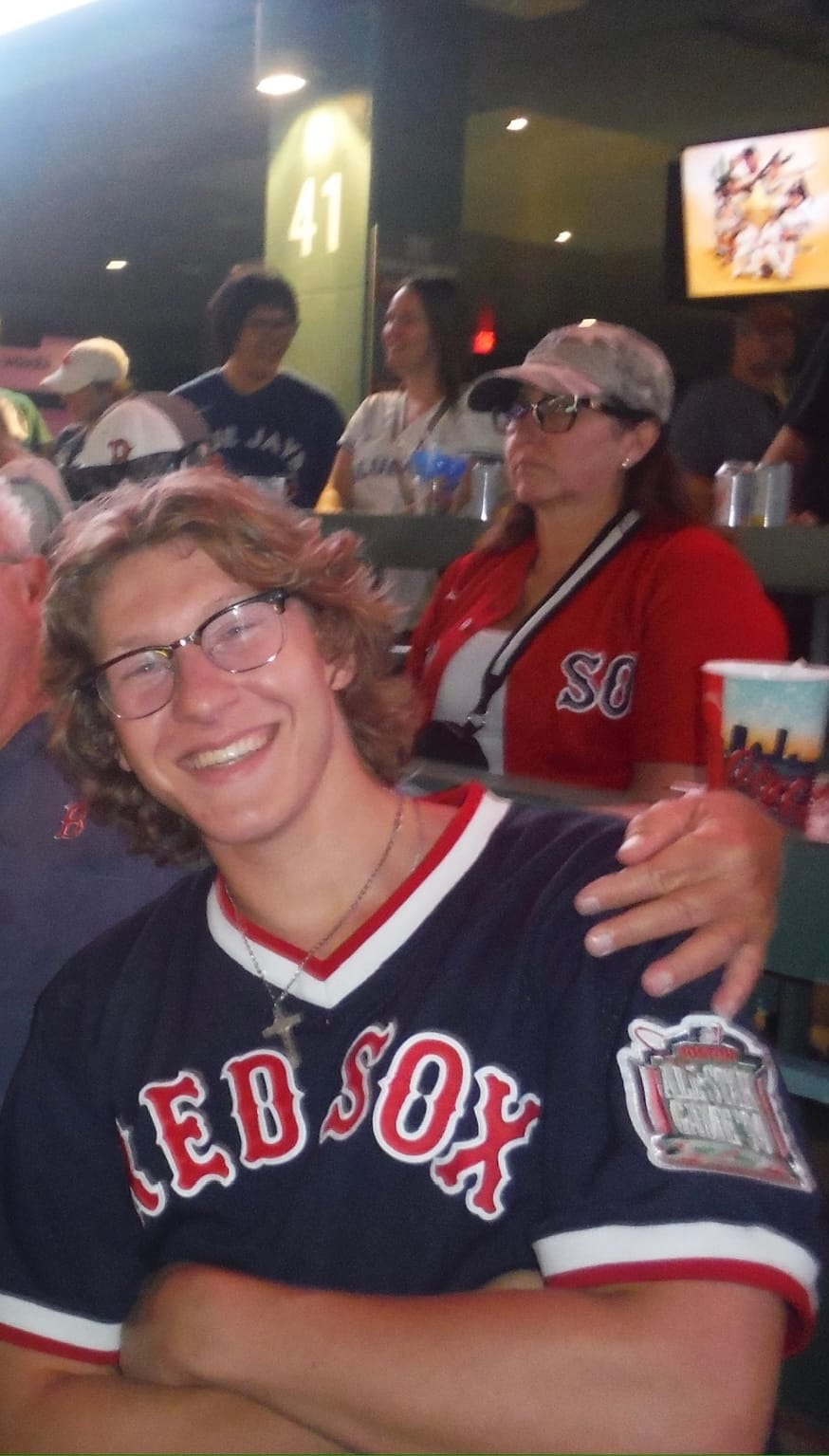





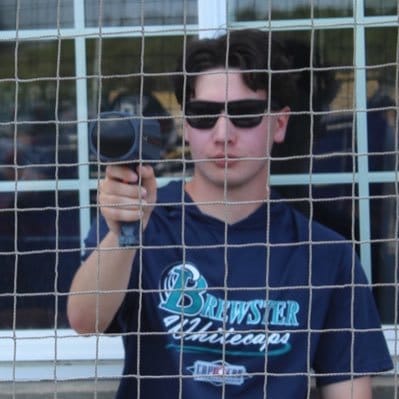


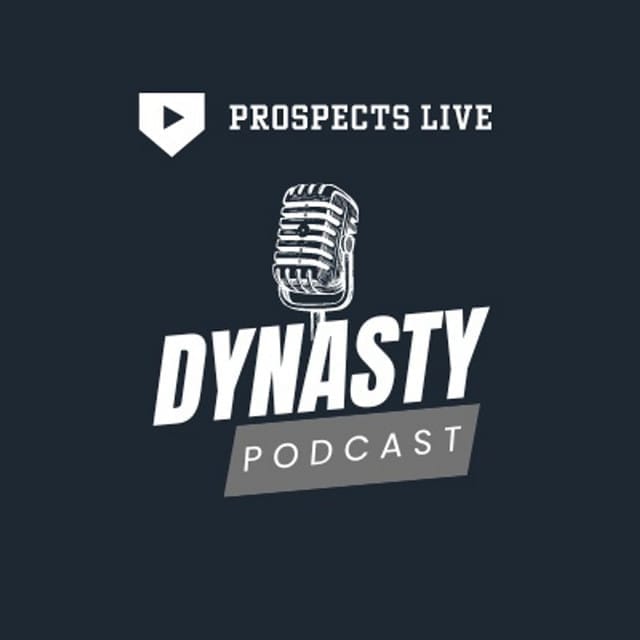

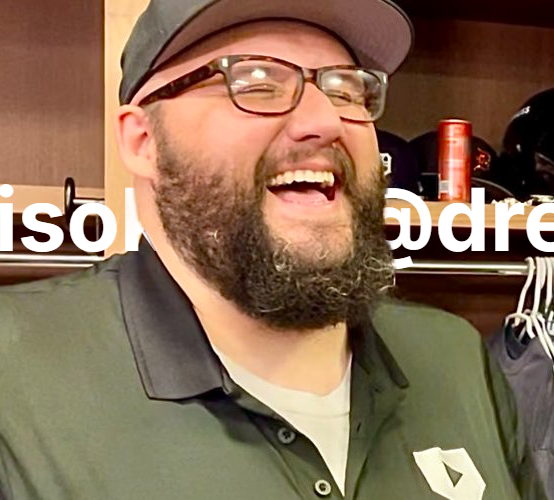

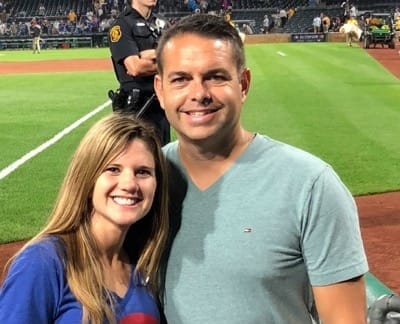





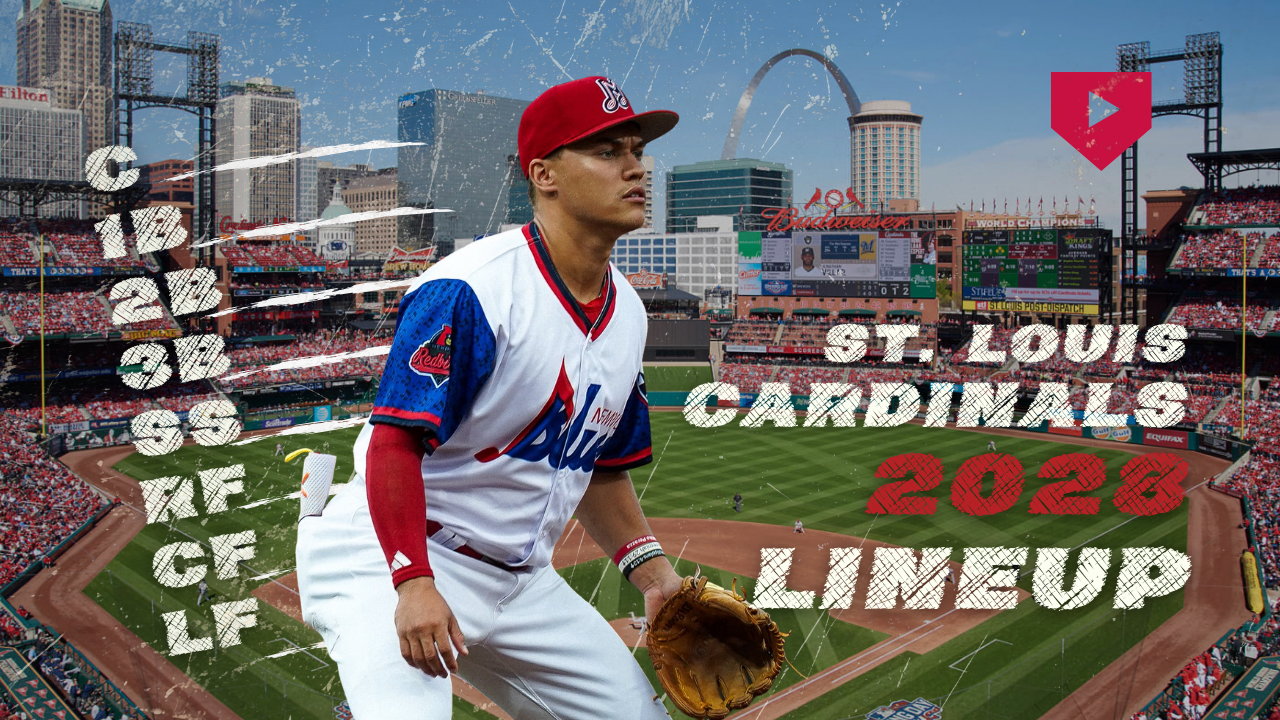

Discussion